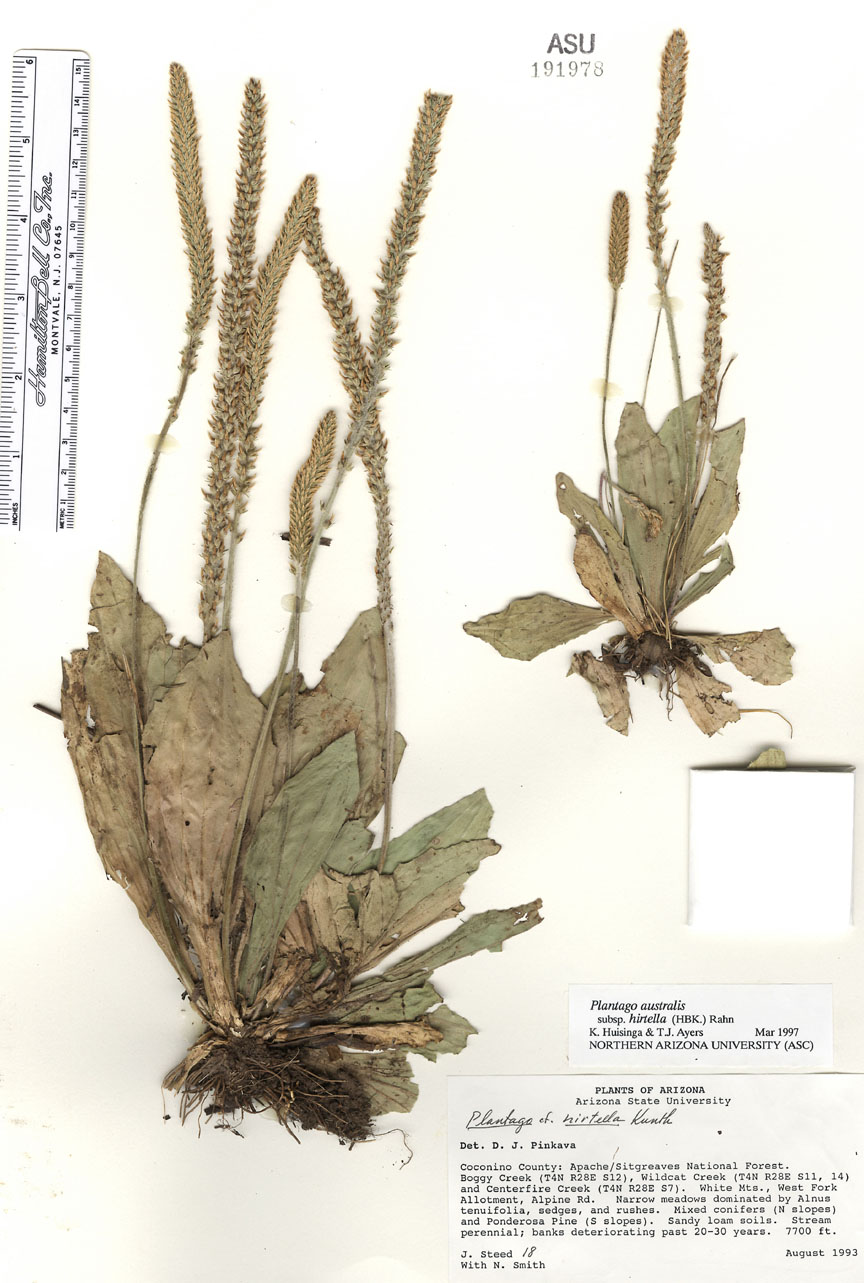
|
Family: Plantaginaceae |
PLANTS: from taproots. STEMS: extremely short, disc-like, simple or branched. LEAVES: simple, entire or variously toothed. INFLORESCENCE: scapose, long or short spikes, loose to dense. FLOWERS: several to many, inconspicuous, each subtended by a bract; sepals free (2 fused in P. lanceolata), usually with overlapping scarious margins; corolla whitish, scarious or membranous, persistent, the lobes with a thickened or colored basal spot; stamens 2-4, exserted; style exserted. FRUIT: included in the sepals or exserted, often purplish-brown. SEEDS: mucilaginous when wet, concave, the outer surface often patterned: Plantago afra and P. ovata are used as laxatives. NOTES: ca. 255 spp., cosmopolitan. (Latin: planta = flat and spread out + ago = kind of). REFERENCES: Huisinga, Kristin D. and Tina J. Ayers. 1999. Plantaginaceae. Ariz. - Nev. Acad. Sci. 32(1). Fls sessile or subsessile in the axils of bracts, aggregated into spikes or heads; sep 4, the 2 next the bract often slightly different from the 2 next the axis (sometimes ±connate); cor long-persistent, its tube investing the summit of the fr; capsule circumscissile at or below the middle; ours annual or perennial herbs, most spp. acaulescent.
200+, cosmop. Gleason, Henry A. & Cronquist, Arthur J. 1991. Manual of vascular plants of northeastern United States and adjacent Canada. lxxv + 910 pp. ©The New York Botanical Garden. All rights reserved. Used by permission. |
This project was made possible in part by the Institute of Museum and Library Services [MG-70-19-0057-19].
Powered by Symbiota



